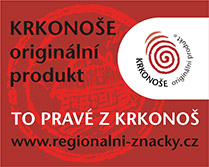Human impact on the natural world and landscape of the Krkonoše Mountains
For over eight centuries, humans have been affecting the normal development of natural conditions in Krkonoše, seeking to exploit all the natural wealth that the mountains provide. The initial stage of colonising the foothills in the 12th to 14th centuries gave way to the medieval mining of mineral resources, especially iron, copper, arsenic and silver ore. The mining and metallurgical trade triggered a wave of rapid expansion of local settlements, to be followed by the glass industry which played an important role in this process in the course of the 16th and 17th centuries. However, mining mineral resources and glass manufacture led to uncontrolled exploitation of the mountain forest. The focus of the demand in timber moved to the neighbouring mountains, marking a shift in the employ of highlanders to agriculture and mountain cabin smallholding activities, livestock grazing and harvesting hay. The period that witnessed such cabin homesteads (the 17th to 19th centuries) dramatically changed the face of the territory, instigating permanent forestless enclaves and slowly leading to the evolution of tourism. This trade took off chiefly in the 19th and 20th centuries, its disproportionate increase resulting in significant damage to the natural flora and fauna in and landscape of the mountains. The threat to the area's natural assets perceived by wise and far-sighted individuals led to protectionist measures being introduced over time. These culminated in setting up the nature reserves of Karkonoski Park Narodowy and Krkonoše Mountains National Park on the respective sides of the border in 1959 and 1963, respectively.









